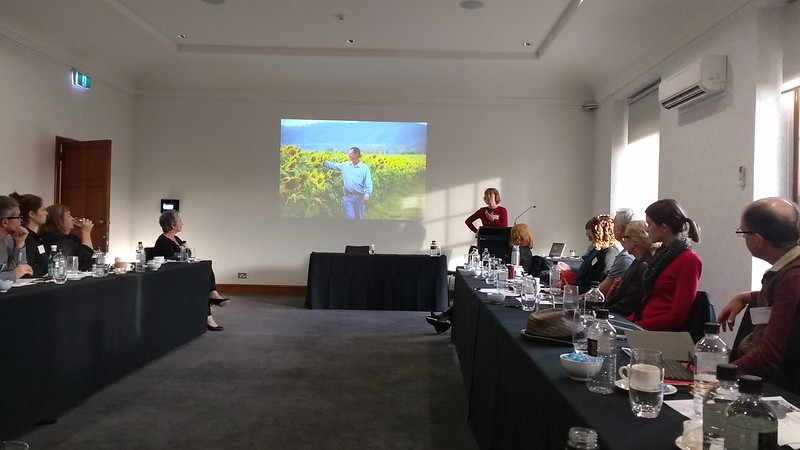Arts, Science, Oceans

On August 12 I was invited to attend an event called Arts, Science, Oceans, at the Sydney Environment Institute, bringing together artists, scientists and humanities scholars. Here’s the original publicity about it.
The event was convened by esteemed historian Iain McCalman, who wrote a wonderful book called The Reef: A Passionate History a few years back.
Iain is leading the way in forging cross-disciplinary collaborative relationships around big picture problems, like the environmental crisis of the Great Barrier Reef.
Laura Fisher, my colleague from Kandos School of Cultural Adaptation (KSCA), spoke about Sugar vs the Reef as an example of a grassroots collaboration between artists and farmers and environmental activists in Mackay, Queensland. In the photo above you can see Simon Mattsson, a leading Mackay sugar cane farmer who is conducting a whole range of experiments in multi-species cropping for soil health.
The idea is that the more focus we place on soil health, the less chemical inputs are necessary, as the sugar cane plant will be able to take in nutrients more efficiently. The soil will start to act like a biological sponge, resulting in much less run-off of soil sediment, fertiliser and pesticides to the creeks and rivers and out to sea, where these elements interact with the ecology of the reef.
There were some excellent reef scientists in attendance from Sydney Uni, who are all doing important detailed research on various aspects of coral reef ecology. Many of them expressed frustration at the difficulty of reaching diverse audiences for their research, and thus the limited effect of their research on policy and community mobilisation. There was a lively discussion about how the creative arts, humanities and sciences could work together.
My argument is that the collaborations need to happen from the very beginning, rather than bringing in artists at the end of the scientific research lifecycle, as communicators, visualisers, or interpreters of data. A more integrated collaboration may result in different research processes and outcomes, and these may not look like science or art as we know it. That’s a risk, and there might be some failures and “wasted” energy along the way. There seem to be practitioners on all sides willing to give it a go.
Some of the barriers to this kind of collaboration are the accreditation systems that have grown up to support discipline-specific research in institutions like universities. If they can’t recognise exactly what discipline a project belongs to, it’s not easy for them to fund it.
You can read a reflection on the day by Ann Elias here. Ann, an art historian, gave a really fascinating talk about the faked up underwater reef photography of Frank Hurley.
